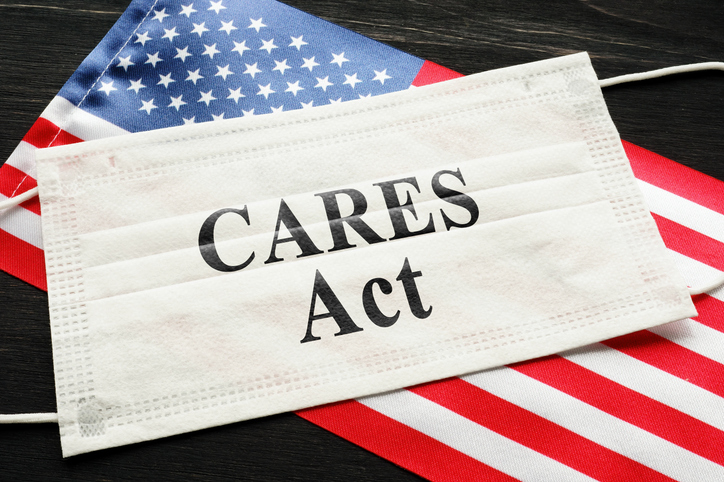
© designer491/iStock/Getty Images Plus
As businesses recover from the aftermath of COVID-19, stimulus-related tax breaks can help recoup massive losses resulting from widespread closures. For those in tax and accounting, CARES Act changes to net operating losses (NOLs) can potentially provide an infusion of cash to help with recovery efforts.
Understanding Pre-Covid NOL Rules
When strategizing future or retroactive tax plans, a working knowledge of how NOLs are defined and calculated is important. Typically, an organization’s net operating loss is equal to deductions less gross income, but with some caveats:
- NOL deductions are disallowed for an NOL carryback or carryover from another tax year
- Dividends-received deductions under IRC §243 and IRC §245 are computed without regard to the aggregate limitations that normally limit these deductions
- The deduction for foreign-derived intangible income is disallowed
For a tax year beginning in 2018 or later, a net operating loss (NOL) deduction for any tax year equals the lesser of:
- The aggregate of the net operating loss carryovers to given year, plus the net operating loss carrybacks to given year; or
- 80% (or 100% for NOLs generated in tax years before 2021) of taxable income computed without regard to the allowable NOL deduction
Not all organizations, however, are allowed to deduct NOLs. Below is a list of organizations that can and cannot use NOLs.
NOLs Are Allowed for:
- Individuals
- C corporations
- Estates and trusts
- Exempt organizations
- Insurance companies
- Personal holding companies, under certain circumstances
NOLS Are Not Allowed for:
- Partnerships
- S corporations
- Regulated investment companies
- Corporations subject to the accumulated earnings tax
- Cooperative organizations
NOLs Post the CARES Act
Before stimulus-related tax policy changes, NOLs after 2017 had an unlimited carryforward period, were not allowed to carry back and were capped at 80% of taxable income. Under the CARES Act, NOLs arising in years beginning 2018 through 2020 may be carried back five years and the 80% NOL deduction limit is temporarily lifted for NOL carryforwards to years beginning before January 1, 2021. Here are some other NOL-related CARES Act changes:
- NOLs are first carried back to the earliest tax year of the 5-year carryback period, and then to the next tax year in such carryback period.
- A short tax year is treated as a tax year for this purpose. This means that a 2018 NOL cannot in every case be carried all the way back to 2013.
- Taxpayers may irrevocably waive the entire 5-year carryback period.
All these nuances are critical in strategizing how to best use these temporary NOL changes and potentially increase cash flow as part of your organizations post-COVID recovery efforts. As an example, let’s look at a common scenario.
Following five straight years of profitability, due to Covid, Company XYZ reported a $200 million loss in 2020. Company XYZ tax’s rate in 2015, 2016 and 2017 hit the top federal rate at 35%; and in 2018, 2019 and 2020 the company was taxed at the current flat rate of 21%.
|
Tax year
|
Tax Rate
|
Income/Loss
|
|
2015
|
35%
|
$700 million
|
|
2016
|
35%
|
$550 million
|
|
2017
|
35%
|
$600 million
|
|
2018
|
21%
|
$625 million
|
|
2019
|
21%
|
$775 million
|
|
2020
|
21%
|
-$200 million (loss)
|
Due to the temporary NOL changes made under the 2020 CARES Act, Company XYZ can elect to apply its 2020 $200 million loss to 2015, when the corporate tax rate was 35 percent (compared to the current 21 percent tax rate that NOLs would typically be carried forward to). This would result in a tax refund of $70 million.
Federal Tax Due for 2015 prior to CARES Act
$700,000,000 X 35% = $245,000,000 tax due
Federal Tax Due for 2015 after CARES Act
$700,000,000 - $200,000,000 (2020 NOL) x 35% = $175,000,000 tax due
Tax Refund Owed
$245,000,000 - $175,000,000 = $70,000,000 tax refund
Other Considerations
Under IRC §172(b)(3), organizations can elect to waive this five-year carryback. An organization making an election under section 172(b)(3) can still take advantage of the temporary changes to the 80% limitation rules and offset 100% of taxable income with NOL carryforwards that would otherwise be subject to the limitation.
There are also complex interactions with other rules, especially for multinational corporations. Those corporations that repatriated income under IRC §965 between 2016 and 2019 may not offset inclusion income under a deemed election under IRC §965(n). However, CARES provides for an election to skip IRC §965 years while still applying the NOL carryback to other years.
Another example is general business credits (GBCs) and foreign tax credits (FTCs) that could potentially be freed up by the NOL carryback and may now carry back or forward to other years. The alternative minimum tax (AMT) may also come into play, not only with a minimum tax but with the limitation for general business credits as well. The separate return year rules are once again relevant with consolidated return groups. This means that NOLs may need to be allocated to a departing consolidated return member.
Taking advantage of stimulus offered by the government, such as the above outlined NOL changes, can make the road to recovery much more palatable. These changes, however, should be done soon with careful consideration. Potential scenarios should be looked at holistically to ensure whichever strategy is executed reaps maximum tax cash.
Ryan Sheehan is Sr. Product Manager at Bloomberg Tax & Accounting.